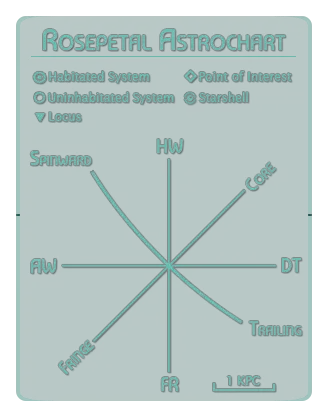The Ascendancy
Ayhchahnavu Lusoykiresah
Public socioanthropological record
Property of the Royal Atheneum of Hövnís, Eörpe
Etmyology & Definition
The Ascendancy is a contextual translation of the Lusoyan's own name for their state, Ayhchahnavu Lusoykiresah. A more literal translation would be 'We are the Ascended'. The first part of the name is built from the inclusive pronoun 'chahnavu', meaning 'I and them'. It's one of three we-pronouns used in Voehn. 'Ayh' is a prefix denoting an infinite plural. (Inf. Pl.)+(I & Them) The second part is built from the root word 'lusoy', meaning 'to ascend/enlighten'. The two suffixes 'kire' and 'sah' are the stative case for 'in state of doing/being/knowing' and validative case for 'factual statement, first hand knowledge' (aka factual truth). (to Ascend/Enligten)+(pres. state being)+(pres. true statement)Recent History
During the first Skethal Infestation, the Ascendancy suffered heavy losses as the conquered worlds at the tip of the Far Reach galactic arm were overrun by the Marrowblight. Initially blamed as the source of the infestation and undergoing systematic extermination, the surviving native population of Ktlac Ktlac fled and sought refuge within other states. Taking advantage of the state of emergency, the Therännan and Lao'coatl staged an insurrection with the help of the Rin Sovereignty in order to liberate their worlds. They quickly set up the temporary Twin Suns Alliance to protect themselves from attempts of re-conquering. The Akreian and Vulgoc populations of the former Atramen Empire worlds followed suit not long after, but opted for a less violent approach by seeking assistance from the United Worlds and Lukariat. With the threat of ending up in conflicts on three fronts, the Ascendancy eventually acquiesced to most of their demands and withdrew control from all of their native worlds except Hrarro and Kosizir. Eventually the liberated worlds formed into the New Atramen Empire and Roko Fuan, loosely allied through the Hextlan Accord. Even more recently, the bioengineered species Rejinat and Nullvox no longer wanted to accept living under slave-like conditions as raw labor forces and rebelled when their demands for sapient rights were denied. This led to the formation of the Three Tails, who are still actively fighting for equal rights for these two species as well as the Cheitosnu.Territory
The Ascendancy currently cover 44 planetary systems with habitable worlds. Of these, two are protected reserves due to their primitive native civilizations. Every planet settled by Lusoyans have predetermined population limits to ensure that present ecosystems are protected, and minimal living standards can be followed.Organizational Data
League of Savants
Representative Committee
Military Assembly
Ascended Family
Cardinal Family
Great Family
Subjacent Family
Bavros (Premium)
Demographic Data
Baluke >0.3 billion >0.001%
Bieggjan >0.3 billion >0.001%
Eörpan 39.26 billion 13%
Laocoatl 12.08 billion 4%
Lusoyan 114.76 billion 38%
Nullvox >0.3 billion >0.001%
Rejinat >0.3 billion >0.001%
Vulgoc 54.36 billion 18%
Inazoru
Hrostthi
Lushyati
Miruasi
Ninprosso
Nksumiri






This is great! Loving the detail, and the map is BEAUTIFUL! <3
Thank you!